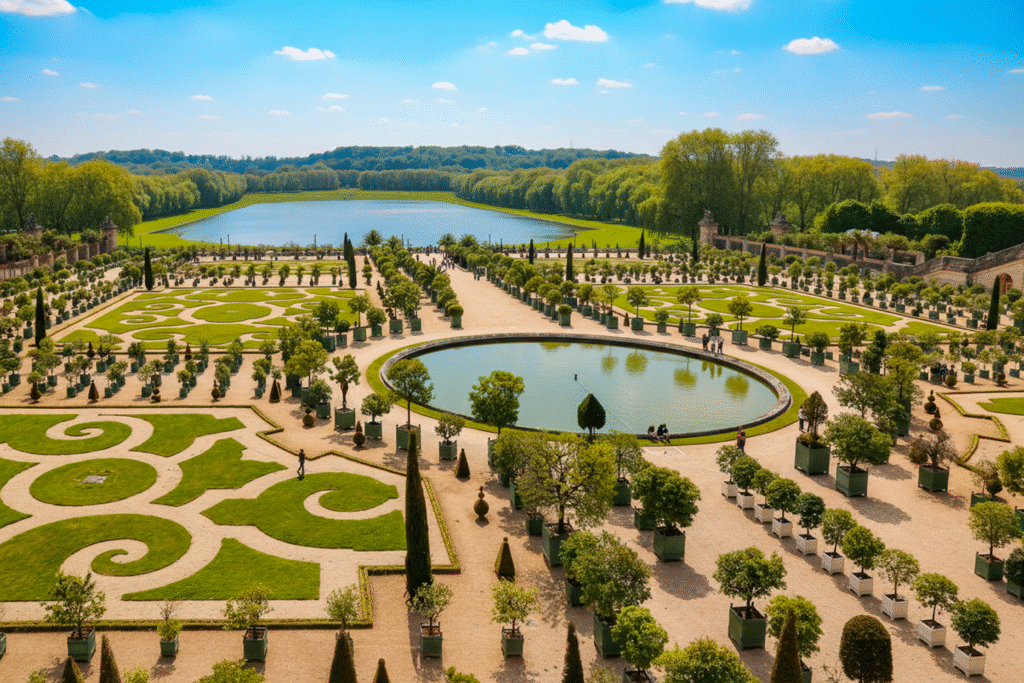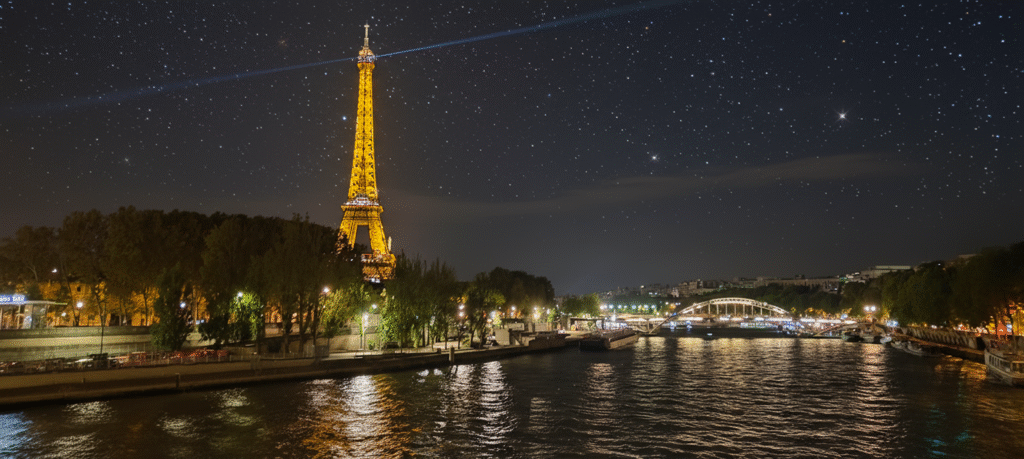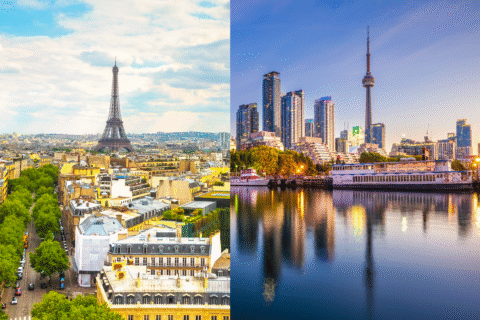Ah, Paris. The City of Light has been captivating the hearts of travelers for centuries. From the majestic curve of the Seine to the imposing grandeur of the Eiffel Tower, it’s a place that lives up to its legendary reputation. But for every first-time visitor swept away by its charm, there’s another who falls into a classic tourist trap, leaving with a lighter wallet and a slightly dimmer view of the city.
Having spent considerable time in Paris and learned from my own (many) mistakes, I’m here to offer some brutally honest, practical advice. Think of this not as a list of don’ts, but as a roadmap to a more authentic, enjoyable, and stress-free Parisian adventure. This is part one of our guide to navigating the city like a pro.
1. Don’t: Sign Up for a Fancy Dinner Cruise on the Seine
Do: Take a Basic Sightseeing Cruise & Dine in a Authentic Bistro
Let’s start with a big one. The image is undeniably romantic: you and your loved one, a glass of champagne in hand, gliding past illuminated monuments under a starlit sky. It’s the postcard-perfect experience that seems like a non-negotiable for a trip to Paris.
Here’s the reality check. These multi-course, “gourmet” dinner cruises are often a massive disappointment for your taste buds and your budget. You’re ultimately paying a premium for the motion of the ocean—or in this case, the slow drift of the river. The food is frequently mass-produced, bland, and designed to cater to the lowest common denominator of the international tourist palate. You’ll fork out €100-€200 per person for what amounts to a mediocre meal with a beautiful, but constantly shifting, view. The atmosphere can feel rushed and assembly-line-like, as staff work to serve hundreds of passengers simultaneously.
The Smarter, More Authentic Alternative:
Break this experience into two perfect, and more affordable, parts.
First, book a basic sightseeing cruise. Companies like Bateaux Parisiens and Vedettes du Pont Neuf offer one-hour tours that cost a fraction of the dinner cruise price. You can go during the day to get your bearings and see the city from a unique vantage point, or you can go at night to witness the magical transformation of Paris as its monuments light up. The commentary is informative, and you’ll get all those iconic photos without the pressure of a formal meal.
Second, take the money you saved—let’s say €150 per person—and invest it in an unforgettable meal at a classic Parisian bistro. Wander away from the riverbanks and into neighborhoods like the Saint-Germain-des-Prés, the Marais, or a charming side street in the 11th arrondissement. Look for a restaurant buzzing with locals, with handwritten menus on chalkboards. For that €150, you can enjoy a multi-course meal with a fantastic bottle of wine, impeccable service, and food that is prepared with care and passion. You’ll be savoring coq au vin, steak frites, or a delicate fish dish that actually tastes of France, not of a tourist-trap kitchen.
2. Don’t: Take a Group Bus Tour to Versailles

Do: Embrace the RER and Explore at Your Own Pace
The Palace of Versailles is a must-see, a testament to the absolute power and opulence of the French monarchy. The instinct for many first-timers is to book a convenient group bus tour from central Paris. It seems easy: they handle the transportation, they might even skip the line, and you get a guided tour. What’s not to love?
Plenty. These tours are expensive, often double or triple the cost of doing it yourself. More importantly, they impose a rigid schedule. You’ll be herded from the bus to the palace, through a predetermined route, and then given a scant hour or two to “explore” the sprawling, 2,000-acre gardens before being whisked back to the bus. Versailles is not a place to be rushed. The sheer scale of the estate—the Hall of Mirrors, the King’s and Queen’s Apartments, the Trianon Palaces, Marie-Antoinette’s Hamlet, the endless fountains and groves—demands time and a sense of personal discovery.
The Smarter, More Independent Alternative:
If you have full mobility, take the RER C train. It’s a simple, cheap (around €7-€8 round-trip), and efficient 30-40 minute journey from central Paris directly to the “Versailles Château Rive Gauche” station, which is just a short, pleasant walk from the palace gates.
The freedom this affords you is priceless. You can arrive early to beat the worst of the crowds, spend two hours marveling at the palace interior, and then dedicate the entire afternoon to the gardens. You can rent a rowboat on the Grand Canal, get lost in the labyrinthine paths, and enjoy a picnic (bring your own, as the on-site options are pricey). You can choose to visit the Trianon estates, which many group tours skip entirely, and which offer a more intimate and equally stunning glimpse into royal life.
Pro Tip: The most crucial step for Versailles, regardless of how you get there, is to book your palace entry ticket online, in advance. The lines for on-the-day ticket purchases are the stuff of legend, and you can waste half your day just waiting to get in. An advance ticket is your key to a seamless visit.
3. Don’t: Wait Until You Arrive to Buy Tickets for Popular Attractions

Do: Plan and Pre-Book Everything Online, Weeks (or Months) in Advance
This is perhaps the single most important piece of advice in this entire guide. The days of showing up at the Louvre or the Eiffel Tower and buying a ticket on the spot are long gone, especially during peak travel seasons (spring, summer, and major holidays).
Paris is one of the most visited cities on the planet. The demand for its top attractions is immense. If you wait until you land at Charles de Gaulle to think about tickets, you will be met with a wall of “Complet” (Sold Out) signs. I’ve seen countless dejected tourists standing outside the Musée d’Orsay or the catacombs, realizing their dream of visiting is impossible because they didn’t plan ahead. During the summer, time slots for the Louvre and the summit of the Eiffel Tower can be booked out for weeks in advance.
The Smarter, Stress-Free Alternative:
Embrace the power of pre-booking. Treat it as a non-negotiable part of your travel planning, right up there with booking your flights and hotel.
Your Pre-Booking Checklist:
- The Eiffel Tower: This is the big one. Tickets for the lift to the summit are released on the official website 60 days in advance and sell out lightning-fast. Set a calendar reminder and be ready to book the moment your date becomes available. If the summit is sold out, consider tickets just to the second floor, which still offers breathtaking views. As a last resort, you can always buy a ticket to climb the stairs to the first and second floors, which is a wonderful experience in itself.
- The Louvre: The world’s largest museum is also one of its most crowded. Book your timed-entry ticket online. You’ll bypass the enormous snaking ticket line and walk right in through a dedicated entrance (look for the “Porte des Lions” or the line for visitors with tickets). This can save you hours of waiting.
- Versailles: As mentioned, non-negotiable.
- Musée d’Orsay, The Arc de Triomphe, Sainte-Chapelle, The Catacombs: All of these have online ticketing systems. Use them.
This strategy does more than just save you time; it grants you peace of mind. Your Paris itinerary becomes a confirmed plan, not a hopeful wish list. You can structure your days around these fixed appointments, filling the gaps with spontaneous walks, café stops, and market visits, knowing that your must-see attractions are already secured.
The Golden Thread: Reclaim Your Time, Money, and Experience
The common thread running through these three “don’ts” is a surrender of control—over your time, your budget, and your personal experience. The overpriced dinner cruise trades authentic flavor for a gimmick. The group tour trades freedom for convenience. The failure to pre-book trades a relaxed schedule for hours of stressful waiting and disappointment.
By taking the “smarter” alternative in each case, you are actively choosing to engage with Paris on your own terms. You are choosing to spend your money on high-quality food and local experiences. You are choosing to spend your time exploring, not waiting in lines or on a bus schedule. You are choosing the path of the savvy traveler, not the packaged tourist.
Paris is a city that rewards curiosity and a spirit of adventure. It’s in the quiet cobblestone alleyways, the bustling local markets, and the corner bistros where the true magic happens. By avoiding these common pitfalls, you free yourself up to discover not just the Paris of the postcards, but the Paris that Parisians know and love.
Stay tuned for Part Two, where we’ll tackle more essential mistakes to avoid, from navigating the Metro to ordering coffee. In the meantime, start planning, start booking, and get ready to fall in love with the real Paris.
What’s your best tip for a first-time visitor to Paris? Share your own do’s and don’ts in the comments below!








